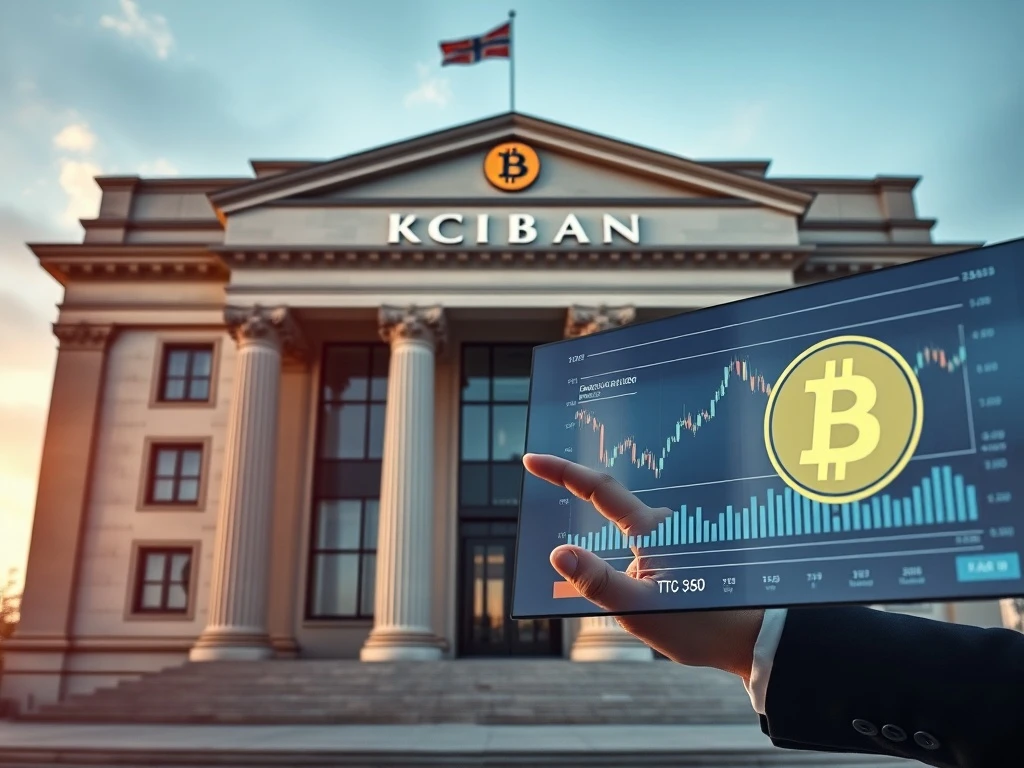Pivotal Shift: Nordea Embraces Bitcoin ETP, Fueling Nordic Crypto Adoption

The financial landscape is rapidly evolving. Therefore, a major player in the Nordic banking sector, Nordea, recently announced a significant change. This shift marks a dramatic reversal of its previous stance on cryptocurrencies. Notably, Nordea will soon offer its customers access to an external Bitcoin ETP (Exchange-Traded Product). This development is a clear indicator of growing institutional acceptance and signals a pivotal moment for Nordic crypto adoption. For those keenly observing the digital asset space, this move by Nordea underscores a broader trend towards mainstream integration.
Nordea’s Historic Caution and the 2018 Ban
Nordea, Scandinavia’s largest bank, once held a deeply cautious view on digital assets. In 2018, the bank famously banned its employees from buying and holding Bitcoin. This decision stemmed from significant concerns. Specifically, Nordea highlighted the unregulated nature of the crypto market at that time. Consequently, the bank stated in subsequent earnings reports that it possessed “no risk appetite or direct exposure to virtual currencies.” This conservative approach reflected a prevalent sentiment among traditional financial institutions. They worried about volatility, security, and the lack of comprehensive oversight. However, the industry has matured considerably since then. This maturation paved the way for Nordea to reconsider its position on Nordea crypto offerings.
The Pivotal Turn: Offering a Bitcoin ETP
Fast forward to today, and Nordea’s perspective has transformed. The bank now confirms customers can access a Bitcoin ETP starting in December. This product, developed by digital asset investment firm CoinShares, holds actual Bitcoin (BTC) as its underlying asset. It offers a structured way for investors to gain exposure to Bitcoin. Importantly, Nordea clarifies that this will be an “execution-only offering.” This means customers can purchase the product, but Nordea will not provide investment advice on it. With over $286 billion in assets under management and more than 10 million customers, Nordea’s decision carries substantial weight. It legitimizes digital assets for a vast client base, thus contributing to wider Nordic crypto adoption.
Regulatory Clarity: A Key Driver for Nordea’s Shift
The primary catalyst behind Nordea’s change of heart is increased regulatory clarity. The bank explicitly cites the European Markets in Crypto-Assets Regulation (MiCA) as a specific example. MiCA provides a comprehensive regulatory framework for crypto assets within the European Union. This framework addresses critical aspects such as investor protection, market integrity, and regulatory supervision. Previously, Nordea expressed concerns about the absence of such protections. “Nordea has closely monitored trends in cryptocurrencies,” the bank stated. “However, it maintained a cautious approach due to the unregulated nature of crypto-assets and the lack of investor protection.” Now, with robust frameworks like MiCA emerging, the risk profile has significantly improved. This evolving crypto regulation environment has made it feasible for institutions like Nordea to engage with digital assets safely. It empowers them to meet growing customer demand responsibly.
Growing Demand Fuels Nordic Crypto Adoption
Beyond regulatory advancements, strong customer demand also played a crucial role in Nordea’s decision. “The market for crypto-related investment products, especially exchange-traded products, has grown rapidly,” Nordea noted. Both institutional and retail investors increasingly seek exposure to digital assets. They prefer doing so within established financial markets. A recent survey by digital asset company K33 highlights this trend. It shows crypto ownership across the Nordic regions—Denmark, Norway, Sweden, and Finland—reached approximately 2.1 million people. This figure represents a significant increase from 1.5 million last year. Furthermore, around 28% of all respondents plan to buy crypto in the next decade. K33 estimates this could boost ownership to 6.4 million people by 2035. This surging interest underscores the growing appetite for Nordea Bitcoin ETP access and other digital asset products. The bank recognizes this demand and responds by integrating these offerings into its services. This strategic move aligns Nordea with the evolving preferences of its customer base.
Implications for the Future of Nordea Crypto Offerings
Nordea’s entry into the Bitcoin ETP market sets a powerful precedent. This move signals a broader acceptance of digital assets within mainstream finance. It suggests other traditional banks may follow suit as crypto regulation continues to evolve. For Nordea, this represents an expansion of its product portfolio. It allows the bank to cater to a new generation of investors. Moreover, it positions Nordea as a forward-thinking institution. The “execution-only” model minimizes direct risk for the bank while still providing access. This balanced approach could become a blueprint for other financial giants. The decision to offer a Nordea Bitcoin ETP reflects a strategic adaptation. It demonstrates a willingness to innovate while adhering to regulatory prudence. As the digital asset space matures, such offerings will likely become more common. This will further integrate cryptocurrencies into the global financial system.
Conclusion: A New Era for Digital Assets in the Nordics
Nordea’s reversal on crypto policy marks a significant milestone. It moves from outright prohibition to offering a Bitcoin ETP. This dramatic shift highlights two critical factors. First, robust crypto regulation has provided necessary safeguards. Second, overwhelming customer demand for digital assets cannot be ignored. This development will undoubtedly accelerate Nordic crypto adoption. It also encourages other traditional financial institutions to re-evaluate their positions. As the environment matures, Nordea remains open-minded to meeting its customers’ needs. This pivotal decision by Nordea signifies a new era. It is an era where digital assets gain increasing legitimacy and integration within established financial markets. The future of finance looks increasingly digital.









